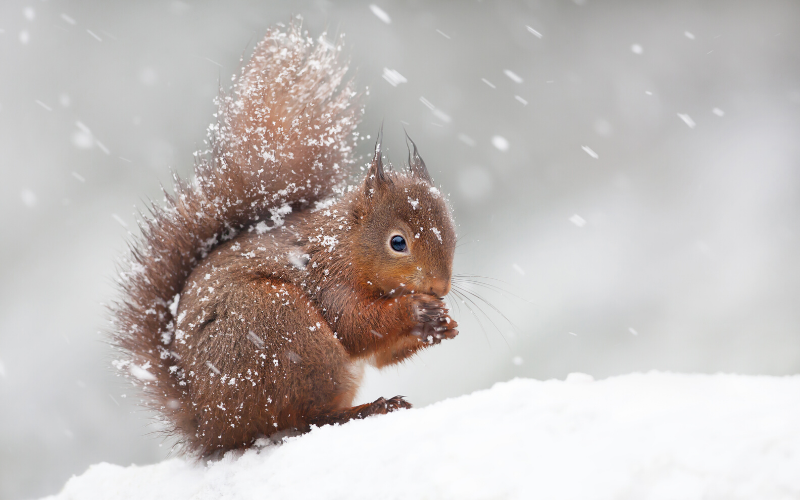Winter frost can pose a dangerous threat to the wildlife animals that live around us. However, we can help them by equipping the balconies and gardens to offer them protection for the coldest days.
How to Take Care of Wild Birds
Birds are among the wild animals that suffer most from the rigours of the winter season. These species, in fact, can withstand the cold thanks to their thick insulating plumage. Nevertheless, low temperatures, snow and night frost can seriously endanger their lives.
To help them get food, you could place some mangers on the balcony or in the garden with different foods. Remember to place the grains in a bowl or in a perforated column raised from the ground. This will prevent the food from deteriorating or being invaded by insects. If you want to install a small bird house, don’t forget to clean it from time to time to remove dry leaves.
As for the food, here is a very important warning. Never offer bread to the birds. They are fond of it, but there is a risk of it swelling in the stomach. If this happens, it will take the animal a lot of energy to digest it properly. Even leftovers of “human” food are not suitable because they can weigh down or damage the delicate metabolism of these animals.
How to Treat Other Wildlife Animals
Are there wild mammals in your area? Then you should think about them too! Squirrels, dormice and hedgehogs need to prepare for winter hibernation, so it is good to support them by providing them with extra food supplies. Squirrels and dormice love dried fruit, dried bread, vegetables and fresh fruit. Hedgehogs, on the other hand, like cat food and fresh fruit, except almonds and walnuts.
Especially with frost and snow, water can become a very precious commodity and not always easily available to small wild visitors. It is therefore essential to place a bowl in the garden or on the balcony. Moreover, remember to change it every day because the cold can freeze it.
Not only food and water. Even finding a warm shelter can help the animals get through the winter weather! First, you could plant trees and shrubs in good time, especially varieties that survive the winter. For example, you could opt for apple trees, pear trees, hazels, plum trees, medlars, berries and aromatic plants. It is also very good to place a hollow trunk, a curved piece of bark or a pile of stones with a frontal opening. They will become perfect places for wildlife animals to shelter and build a nest.

